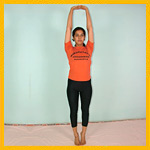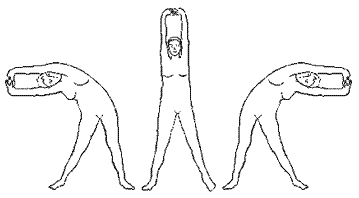Tadasana | Mountain Pose

‘Tada’ means palm tree in sanskrit language. Tadasana or Mountain Pose is very similar to palm tree, also known as Urdhva Hastasana. It is very popular and one of the most easy yoga poses, which can be practiced by anyone without any problem. Tadasana is helpful for body stretching, making spine flexible and helps to increase height.
Tadasan has few variations which make it more popular.
Tadasana or Mountain Pose
Stand up straight keeping both feet join. Now, while inhaling, lift the heels up and raise both the hands straight up over the head, stretch the body upward as much as possible, palms should be facing each other. This is the final pose of normal Tadasana or Mountain Pose.

Urdhva Tadasana or Extended Mountain Pose
This posture is like normal tadasana except hands position. Hands are joined together with interlocked fingers, then raise hands over the head, palms should be facing upward. Now, keeping all the body weight on toes, strech the body and hands upward as much as possible.
Tiryaka Tadasana
It is an extension of Urdhva Tadasana. While hands are stretched, the body is bend to left side from the waist as much as possible and then to the right side one by one.

Benefits
- Tiryaka Tadasana cures the stiffness of spine and increases it’s flexibility.
- Tadasana is helpful for increasing height and cures waist problems.
- This is good for the all abdominal organs.
- Tiryaka Tadasana is very helpful for reducing side abdominal fat.